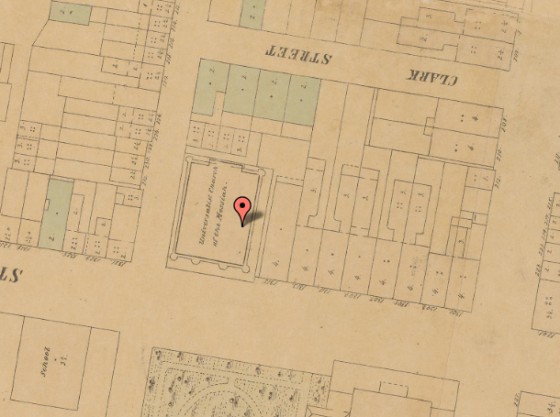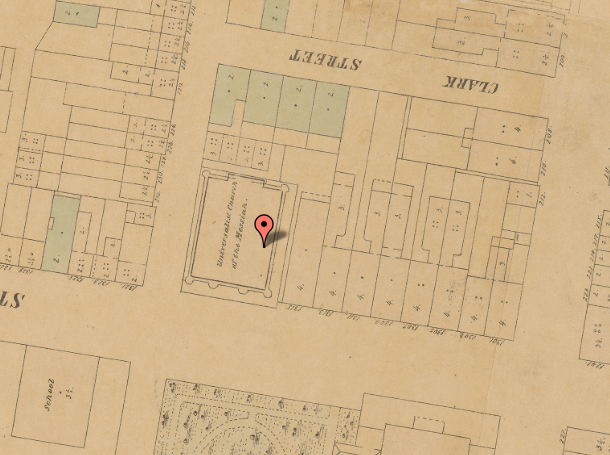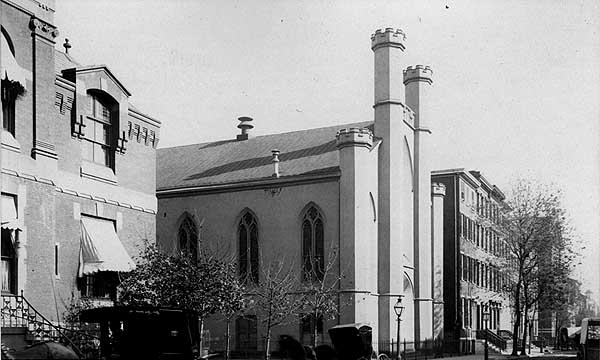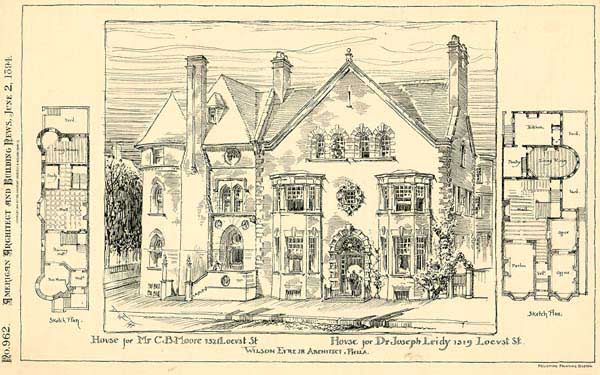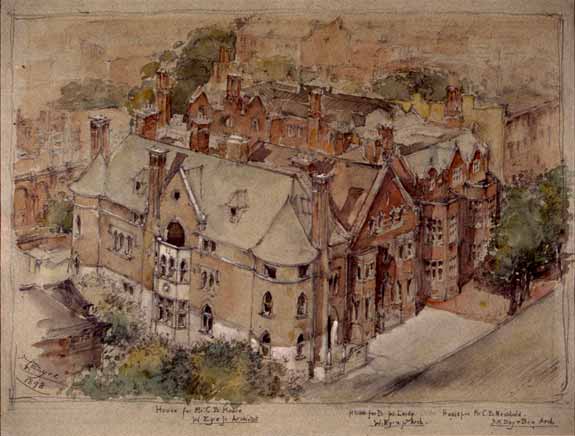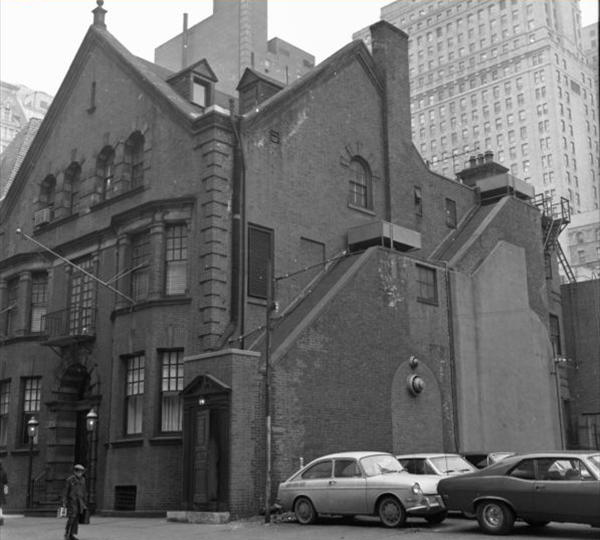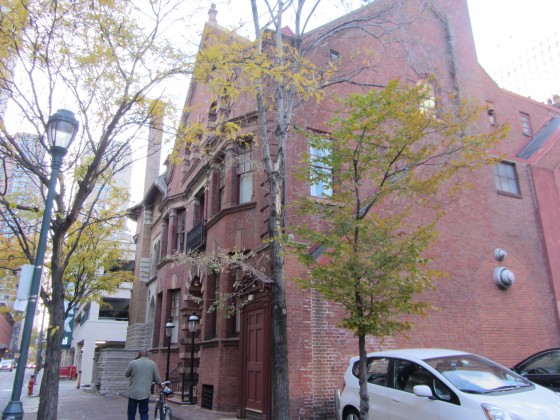1319 Locust St. stands out on the north side of its block for its deep red brick edifice and its wrought iron railings. These features hint at the building’s late 19th century construction. However, this would not be the first known structure to stand on the spot. According to the Bryn Mawr College website, that honor belongs to the Universalist Church of the Messiah, which was built in 1850. Its location is shown here below in an image taken from Hexamer & Locher’s 1858 Philadelphia Atlas.
According to the Unitarian Universalist Church of the Restoration, the Philadelphia-based chapter of the Church of Messiah would prove itself a particularly progressive house of worship, opening its doors to African American clergy and preachers of variant denominations. As to the latter, this was an early venue for the expression of Unitarian ideologies in the United States. The Church is shown here below in a photo taken from the Bryn Mawr college website and dated to 1885.
According to Philly Roots Web, the church would relocate to Broad & Montgomery by 1890. It was at this point that the original structure was demolished and replaced with a pair of homes for two prominent Philadelphians. As the placard on the outside of one building reports, promising young architect Wilson Eyre, Jr. constructed the neighboring houses for famed archeologist Clarence B. Moore and noted paleontologist Dr. Joseph Leidy. The houses are shown in the sketches here below, both taken from the Bryn Mawr College website.
Sadly, Leidy would scarcely have the opportunity to enjoy his new residence at 1319 Locust as he passed away one year after its completion. Fortunately, the building would enjoy an active second life upon its purchase in 1925. According to Wikipedia, the Poor Richard Club moved into the building at this juncture. Wikipedia tells that the club was comprised of area advertisers who wished to bring greater ethical order and respect to the industry but who ultimately used the club for social and political functions. The club’s membership swelled through the middle part of the century, with its Gold Medal of Achievement becoming a coveted honor for the next several decades. Among the luminaries to win the award were cartoonist Walt Disney (1924), humorist Bob Hope (1945), and Vice President Richard Nixon (1956). By the end of the late 60s, however, membership in the club began to decline. The building is shown here below in a 1970 photo taken from the Department of Records.
Poor Richard sold the building in 1979 and folded just a few years after. Ironically, today, the building which honored no fewer than three Republican presidents serves as the Locust Street headquarters of District 1199- C of the National Union of Hospital and Health Care Employees- and is a bastion for Democratic political activity.
–David Tomar

